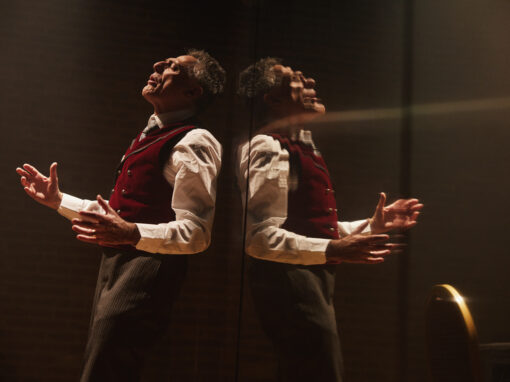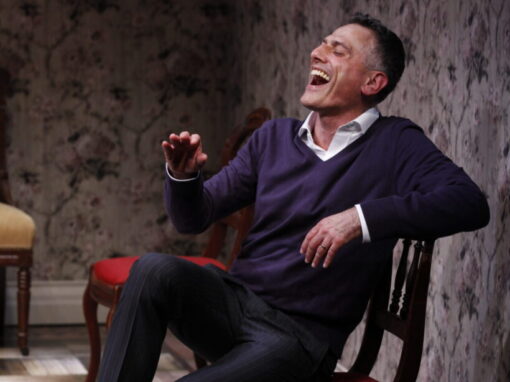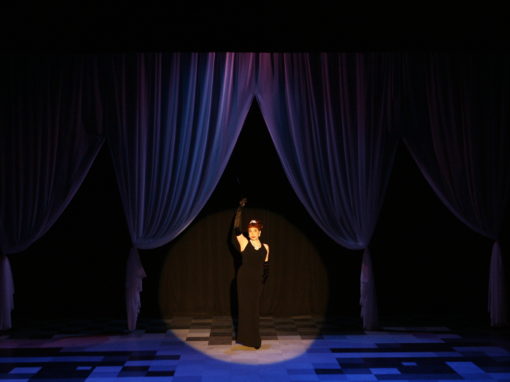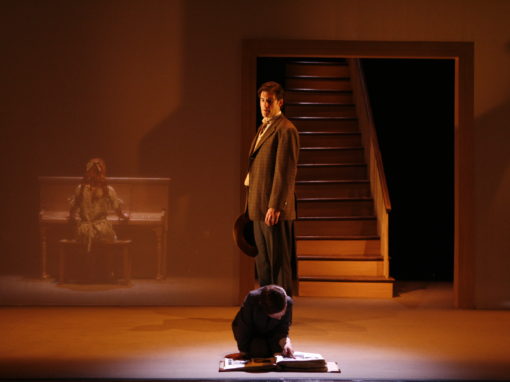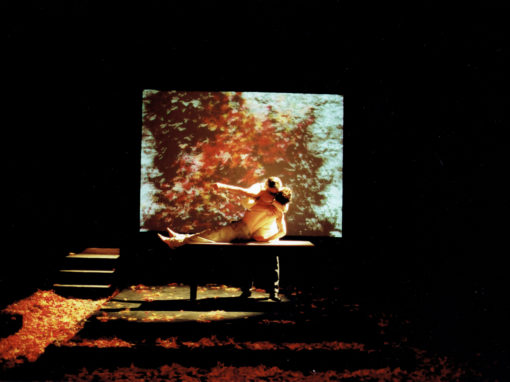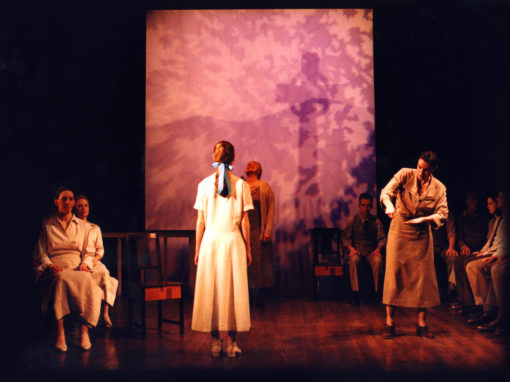The Unapologetic Collision of Highbrow and Lowbrow // by Jen Silverman
I moved to Okayama, Japan after college, a rural southern prefecture far from the Tokyo suburbs where I’d lived as a kid. It was there that I came across Kagura, a durational epic theatre derived from Shinto rituals. Kagura cycles are performed at shrines and can be seven to nine hours long, stretching from daylight to darkness. My friend Kaori had married into a Kagura family and so she began to take me with her.
We would settle on the wooden benches as the performance began, only moving when night fell and it got so cold that we lost feeling in our hands and feet. Then we’d slip into the temple, where women ladled soup from a vat into Styrofoam cups and bowls. Soup in hand, we’d return to our benches and slip back into the seemingly timeless space that had been created. It was there that I began to think of theatre as a highly physical, even spectacular act: an invitation to an audience to bear witness to mystery.
Transport Group’s production of Eugene O’Neill’s Strange Interlude re-conjured this experience for me, when I saw it almost a decade later. Strange Interlude is a six-hour eight-actor play performed in an acrobatic, marathon feat by the inestimably talented David Greenspan. The production took place inside Brooklyn’s cavernous Irondale, where designer Dane Laffrey had built a wooden structure to house the play. In the first several acts of the piece, the audience was ushered gently from one constructed room to another; for the finale, post-dinner, we were brought upstairs to the mezzanine to witness the final scenes performed on the roof of the set.
The experience was a journey – through space, through time, and through another medium that I still have trouble naming. Awe, maybe. Mystery. The wonder of seeing a performer like David switch between eight characters like a cross between a surgeon and a tightrope walker. Watching David, I received information transmitted in the tiniest motions of his eyebrows, a flick of the chin. These are skills of language translation; they also make a good fortune-teller. In learning the tells of his many characters, we could follow him through his multi-morphic shape-changing. It felt like we were in the presence of something wild and unstoppable.
It’s no secret that O’Neill can be melodramatic, and part of the deliciousness of Strange Interlude is in how unashamedly the story serves up naughty, soapy plots and subplots. But to have that work channeled through the body of one singular performer and elevated by the daring and vision of the production, was also a nod to the unapologetic collision of highbrow and lowbrow. Why can’t a soap opera be a meditation on time and mortality? Why can’t a high-wire performative act also be a compelling story?
Hiromasa Ishiyama, the master of the oldest Kagura company in the Kanto region, once gave an interview where he said: “We invite the gods down from the heavens, and we perform for them. Of course, we also perform in front of an audience, but it is with the gods’ blessings that we do so.” Watching Strange Interlude, I felt that we were all receiving an uncommon blessing; that theatre itself could and should – and will again! – be that blessing.

About the author:

Explore Our Past Shows
